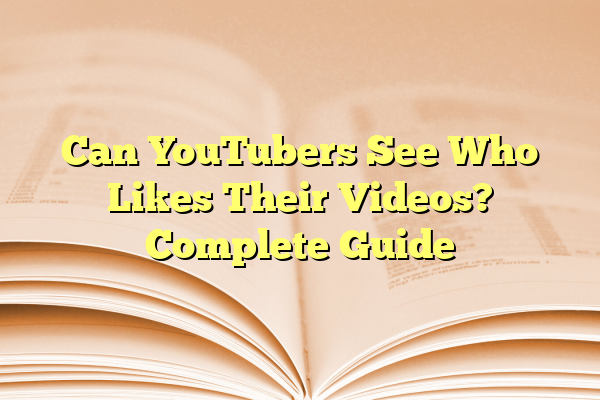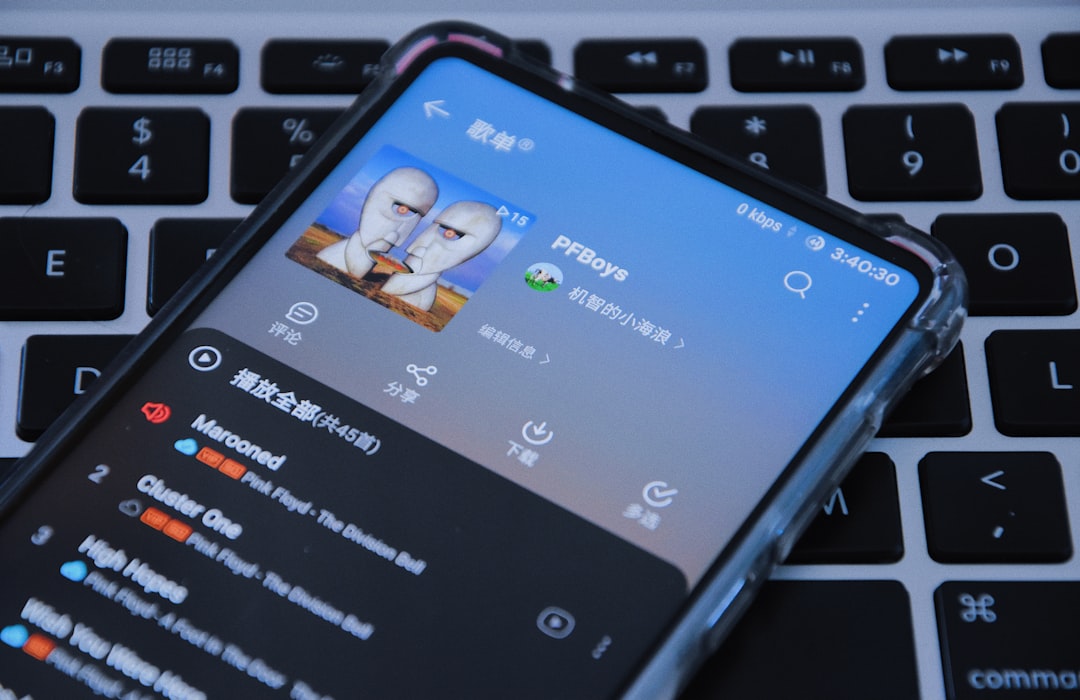
Can YouTubers See Who Likes Their Videos? Complete Guide
When using YouTube, it’s natural to assume that your actions are visible to content creators. Whether you hit the “Like” button to support a video or leave a comment expressing your views, many users wonder what kind of data content creators can see. A commonly asked question is: Can YouTubers see who likes their videos? This article provides a complete, detailed guide on what information YouTube shares with creators and what remains private to users, ensuring trust, transparency, and a better understanding of the platform’s privacy policies.
Contents
- 1 The Short Answer
- 2 Understanding How YouTube Likes Work
- 3 Creator Access: What Data Do YouTubers Actually See?
- 4 The Role of Privacy Settings
- 5 What About Comments and Subscriptions?
- 6 Third-Party Tools and Myths
- 7 Why Does YouTube Restrict This Information?
- 8 Tips for Viewers Who Want to Stay Anonymous
- 9 What Creators Can Focus On Instead
- 10 Conclusion
The Short Answer
No, YouTubers cannot see exactly who liked their videos. While creators can monitor the number of likes and track analytics that reflect engagement over time, the identities of those who clicked “Like” remain anonymous unless the user makes their activity public in certain ways.
Understanding How YouTube Likes Work
When you “Like” a video on YouTube, you’re essentially giving positive feedback to the content. This helps the platform’s algorithm understand which videos are resonating with viewers and often results in increased visibility for the video. However, what happens behind the scenes in terms of data sharing is more nuanced.
What Happens When You Like a Video
- The like gets publicly counted on the video’s page under the thumbs-up icon.
- YouTube’s algorithm includes this as a positive engagement signal.
- If your liked videos playlist is set to public, others (including the video creator) can see your likes if they browse that list.
Creator Access: What Data Do YouTubers Actually See?
YouTube Studio is the primary dashboard through which YouTubers manage their channels. While it offers a range of powerful analytics about audience behavior, YouTube deliberately places restrictions on what personal data is available to protect user privacy.
Data Available to Creators
Through YouTube Studio, creators can access:
- Number of likes and dislikes for each video.
- Engagement metrics, such as watch time, average view duration, and audience retention.
- Geographical data — where viewers are watching from (in aggregate).
- Subscriber growth trends tied to specific videos or time periods.
- Comments, but only when users have manually posted one.
Despite this depth of insight, creators cannot see:
- Which specific users liked or disliked a video.
- Which users watched how much of a video, unless they commented publicly or left a trace like sharing the video.
The Role of Privacy Settings
Your privacy settings on YouTube significantly influence what others can see about your activity. For example, if you have your “Liked videos” playlist set to public, anyone — including creators — can see what content you’ve liked. But by default, this playlist is set to private.
How to Check or Change Your Privacy Settings
- Go to your YouTube account settings.
- Click on the Privacy tab.
- Look for the option that says “Keep all my liked videos private.”
- Make sure this option is checked to maintain your anonymity.

What About Comments and Subscriptions?
If you’ve commented on a video or subscribed to a channel, the creator will be able to see that — but there are rules there, too.
Comments
Any comment you post is tied to your username and profile, so if you like a video and also comment on it, you are no longer anonymous to that creator. Their assumption might be that you also liked the video, but there is no system for them to verify that unless you say it in the comment.
Subscriptions
Whether a creator can see you’ve subscribed to them depends on your subscription privacy settings. If your subscriptions are set to private, creators won’t know even if you’ve subscribed. If they’re public, they will see your username appear in their subscriber list.
Third-Party Tools and Myths
There are several myths and even misleading services online claiming that YouTubers can use third-party tools to uncover who liked their videos. Some of these are scams, while others misrepresent what is truly possible.
Can Any Tool Reveal Liker Identities?
No legitimate tool exists that bypasses YouTube’s privacy filters. Tools that scrape public data can show you commenters or public playlists, but they cannot access private activity. Users should be wary of any software or website that claims to reveal private user data. Sharing your YouTube account with such services may even violate YouTube’s terms of service and compromise your privacy.
Why Does YouTube Restrict This Information?
At the core of YouTube’s policy is a commitment to user privacy and security. Allowing creators to know who liked or disliked their content would open the door to potential harassment or unwanted attention. By keeping this information private:
- YouTube ensures that users can engage with content freely.
- It fosters honest engagement — users are less likely to feel pressured.
- The platform reduces the risk of manipulation or targeting.
Tips for Viewers Who Want to Stay Anonymous
- Keep your Liked Videos playlist set to private.
- Be cautious when commenting if you want to remain anonymous.
- Review your YouTube privacy settings regularly.
- Avoid sharing personal details in your public profile or in comments.
What Creators Can Focus On Instead
Rather than obsessing over who liked or disliked a video, smart content creators focus on overall engagement, trends, and feedback offered through comments or analytics.
Understanding your audience at a high level allows you to tailor content strategy more effectively without violating user privacy. Likes are one part of the broader engagement picture that includes shares, comments, watch time, and audience retention.
Conclusion
While it’s natural for both creators and viewers to be curious about digital interactions, YouTube has carefully designed its platform to prioritize user privacy. Content creators cannot see who liked their videos unless that information is made publicly visible by the users themselves. This policy ensures that YouTube remains a safe space for users to engage, explore, and enjoy content without the fear of exposure or surveillance.
So, the next time you like a video, remember: your action supports the creator by boosting the video’s visibility, but your identity behind the like remains private — and that’s by design.
